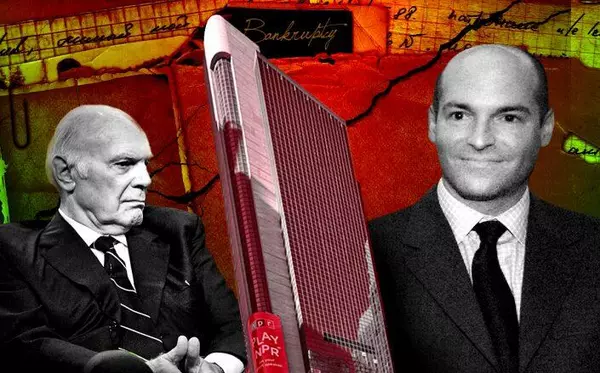
Renters taking renovations into their own hands
Renters are venturing where they’ve rarely been before: Home Depot. Tenants are making renovations to their properties in recognition of the fact they may not be able to afford buying a home for some time, the Wall Street Journal reported. Housing affordability has declined with rising prices and mortgage rates, making it harder for tenants to follow any homeownership dreams. As a result, tenants are doing some DIY renovations of their rental properties. That’s typically been a nonstarter for tenants, who don’t want to spend money on changes not built to last and don’t want to run afoul of their landlord, as many leases require units to be returned in their original state. Tenants have found creative workarounds to those problems. Many are looking to make more temporary changes, such as hanging up peel-and-stick wallpaper. Wayfair’s bookings for reversible add-on services such as doorknob and drawer-pull installations have tripled since last year. Unlike when homeowners dive into renovations, there’s no benefit to pouring equity into a rental property for tenants, other than to increase their own enjoyment. “It makes no financial sense to invest in a property you are renting,” Florida Atlantic University professor Ken Johnson told the publication. “What’s driving this is that it’s incredibly expensive to switch from renting to owning.” Ideas and options are proliferating for tenant renovations that are temporary or of minimum cost. One of the most popular renovations is temporary wallpaper, which in August outsold traditional wallpaper for the first time, according to Spoonflower. Big rental markets such as New York, Chicago and San Francisco are seeing temporary wallpaper sales outstrip traditional wallpaper sales by double, even triple. Other ideas include plants and landscaping, lighting changes and art, though some of those were popular for renters before the pandemic, too. Interior designers stand to benefit from tenants’ shift in alteration attitudes, especially if housing affordability remains low for many. Havenly, which projected a slowdown when the housing market cooled, saw sales growth increase in 2022 year-over-year because of a 20 percent increase in spending by renters.

The NASCAR effect: How racers turned Lake Norman into trophy home heaven
While NASCAR is huge in Lake Norman, N.C., the only paint that’s likely to be traded is for drivers’ newly built or renovated luxury homes. Over the past decade, many of the sport’s richest drivers have moved to the area about 20 miles from Charlotte, thanks in large part to the proximity of Charlotte Motor Speedway, a major track, the Wall Street Journal reports. NASCAR supernovas like Dale Ernhardt Jr. and Denny Hamlin live in the area, while star Joey Logano recently sold his Cornelius estate for $4.3 million. Earnhardt, who has retired from driving but runs his own NASCAR team as well as serves as a commentator for NBC Sports, lives in a four-bedroom home that is situated on a 300-acre estate outside of Mooresville, which is called “Race City USA” due to having more than 50 motorsport manufacturers and teams with over 2,500 employees. “All of the employees, drivers, mechanics, everybody really involved in the industry mostly lives in this area. It’s just become the hub,” Earnhardt told WSJ. “It’s just a coincidence that I was born and raised here but I suppose that if NASCAR was located in another part of the country that’s where I’d be.” Earnhardt’s estate includes an 800-foot treehouse and a replica of an old western town (with sheriff’s office, saloon, church and jail cells) in the backyard, which is used to host birthday parties and charitable events. The property also has about 70 acres of wooded space for four-wheel trails. Hamlin, meanwhile, has a 30,000-square-foot lakefront mansion — estimated to have cost $15 million to $20 million to construct — in Cornelius. The home includes an indoor basketball court, a lounge with multiple TV screens and an area where Hamlin displays his myriad trophies and race memorabilia. The Toyota race car Hamlin drove to victory in the 2016 Daytona 500 is on display in a glass garage bay. Driver Ricky Stenhouse’s 9-000-square-foot home, with an outdoor pavilion and infinity pool, is listed for $16 million, which, if fetched, would be a record for the area. Over the past 20 years the home has been owned by three NASCAR drivers: Stenhouse, Ernie Irvan and Joe Nemechek. Real-estate agent Josh Tucker, of Corcoran HM Properties in Mooresville, said NASCAR is the main driver of the market. “It seems like a lot of people I either represent on the buy side or the sell side end up having some connection down the line to NASCAR,” he told WSJ. Any listing over $2 million in the area is likely to draw interest from a buyer with some link to NASCAR, real-estate agent Reed Jackson of Ivester Jackson told the outlet. Drivers mostly want garage space and lakefront docks, Tucker suggested. “Just like they love fast cars, they also love fast boats,” he added. Accessibility to an airport as well as Charlotte and Concord is also among the other appealing aspects of the area, according to WSJ. The median sale price for a home in Cornelius is $476,000, according to Realtor.com, up from $222,000 in 2012. The median sale price for a home in Mooresville during the same time has jumped from $196,000 to $428,000. — Ted Glanzer

TikTokers are office work’s biggest cheerleaders
The Gen Z office worker down the hallway isn’t talking to themself all day — they’re probably making a TikTok. More young office workers are taking to the social media platform to glamorize the daily routine of coming to the office, the New York Times reported. While these workers aren’t being paid for the promotion, they’re essentially doing the bidding of landlords desperate to bring employees back to the office after the pandemic’s disruption. These videos make the mundane seem more exciting, more romantic. Some videos show off amenities of a company’s office, but others create a flattering portrait of things that may seem more trivial, like pouring a fresh cup of coffee and taking it to your desk. Some videos are even scored with calming songs, making an arduous commute feel like a breeze. The office TikToks are gaining traction, especially among the social media platform’s young users, some of whom still haven’t set foot in a traditional office due to the pandemic. Meena Kirupakaran’s “day in the life” video at HarperCollins Canada has racked up more than 300,000 views. A similar video from Alison Chen at Microsoft’s office in San Francisco has accumulated 143,000 views and counting. Not everyone appreciates the posts, though. Comments on the videos allege the portrayals don’t show much work actually getting done. The videos can also glamorize companies at a time when workplace situations are more complex than what can be shown on a single person’s screen, such as the strike for better pay and benefits at HarperCollins. Even if they aren’t actively encouraging the posts, office landlords and companies stuck with leases are more appreciative of the TikToks. Colleagues could come across the posts and be reinvigorated to come into the office. Jobseekers, meanwhile, could see the perks of working for a specific company and pursue a career with it. Office owners will take the victories where they can get them. Office occupancy weakened significantly during the pandemic and hasn’t shown much life in the past few years. Each time Labor Day rolls around, companies spark hope of an office revival, only to see those dreams stall. The latest Kastle Back to Work Barometer recorded an average occupancy rate of 37.8 percent across 10 major markets Kastle Systems tracks with swipe data. Major markets where occupancy stood at less than 40 percent include Chicago, New York, San Francisco and Los Angeles.
Categories
Recent Posts









